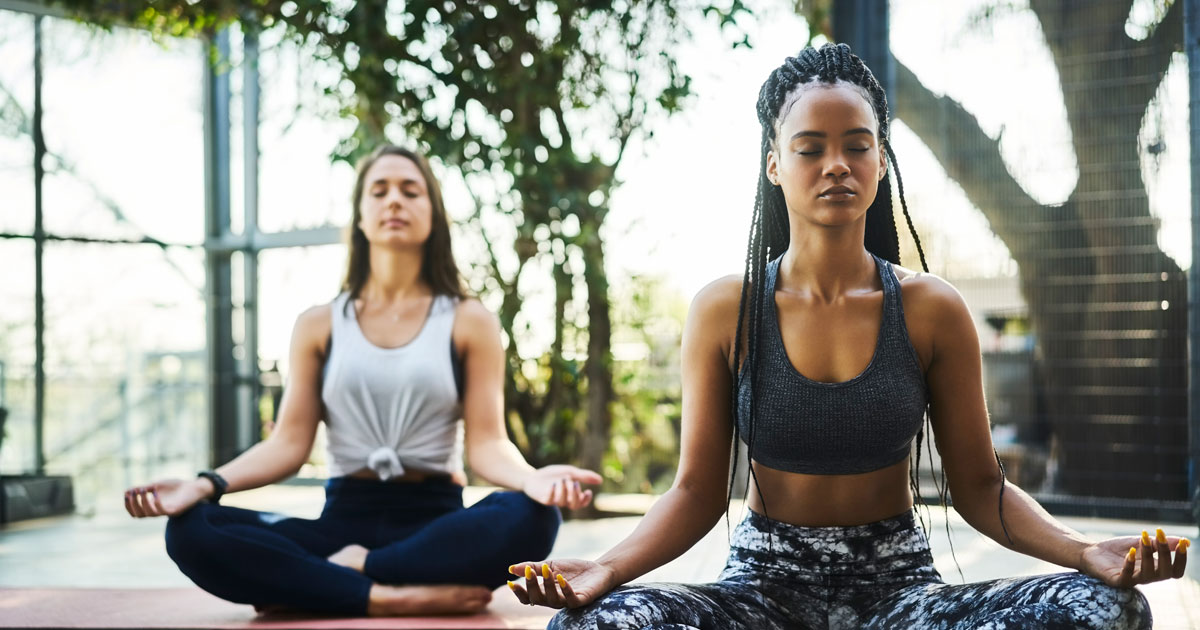Meditation is a tool for quieting the mind, becoming at peace with yourself and the world around you. In the journey towards recovery a daily meditation practice can work wonders for staying centered, consistent and grounded. Your practice can begin with just a few mindful breaths; if you can breath, you can meditate! Benefits of meditation range from improved concentration and self awareness, to better sleep, stress reduction and a healthier heart. If that’s not enough, a regular practice can even reduce signs of aging and help you both feel and look younger!
I once knew someone who was going through a difficult point in their lives after the loss of a loved one. This person had struggled with alcoholism and finally found sobriety after years of commitment and hard work. While it was tempting to turn to alcohol to help numb the pain, he instead utilized and intensified his meditation practice from 10 minutes a day, a few times a week, to 30 minutes everyday. No exceptions, no excuses. He set aside the time, turned off his phone, removed distractions and took his “meds,” as he liked to call it.
He found that making this commitment not only saved him from relapsing into unhealthy habits, but also transformed his entire life for the better. His relationships flourished, new opportunities presented themselves and he finally found a deep sense of happiness, a feeling of contentment that could not be shaken.
So how do we get started? Below are 10 tips to begin your journey towards zen.
“The Longest journey begins with a single step.”- Patanjali
- Set aside a scheduled time each day, free from distractions.
- Put your phone on “do not disturb” and set a timer for the amount of time you wish to meditate- ideally 5-30 minutes. You can also download an app such as Insight Timer or Headspace for guided and timed meditations.
- Sometimes it’s useful to practice yoga or do some simple stretches before beginning. Some feel good movements such as neck rolls, shoulder rolls, cat/cows and seated twists can help relieve tension, allowing you to more fully relax.
- Sit comfortably- this can be on a chair, couch, bed or on the floor. If you sit on the floor in the traditional cross legged position you can pile pillows or blankets underneath thekk hips to alleviate low back pain.
- Close your eyes.
- Begin to quiet the mind by bringing your awareness to the breath, the slow rhythm in and out.
- Start your practice with a simple mantra. This can be anything you want, a word or a phrase such as “I am safe, I am peace, I am love.”
- Meditation is about quieting the mind but it is natural for thoughts to come up. Anytime your mind begins to wander you can use your breath as a couch, coming back to it, listening in and then settling back into stillness.
- Look at your meditation time as a tool to reset and recharge. Similar to a phone becoming slow when it has too many apps, emails, websites and texts open, your mind can become “cluttered” with the many things we process on a daily basis. Meditating allows you to refocus and find a clearer perspective.
- Open your eyes and smile when you’re done! Think of 3 things to be grateful for to seal your practice.
Extra credit: these are a few way to make your meditation more luxurious if you so wish!
- Take your meditation to the bath and add a few drops of lavender oil to the water.
- Light candles and dim the lights
- Set up a space or a small shrine in your home that of things that inspire you. For mine I have a small table topped with a photo of my daughter and hubby, fresh flowers, a small elephant that I bought in Thailand and a beautiful silk scarf and candles. I’ll sit on a pillow in front of my shrine for meditation time
- Fill an aromatherapy diffuser with a few drops of calming essential oils such as lavender, rose, or chamomile.
- Brew some tea to enjoy after your meditation time.
- Keep a journal as a part of your daily practice. Write down things that inspire you, struggles you are going through and anything else that comes up!





